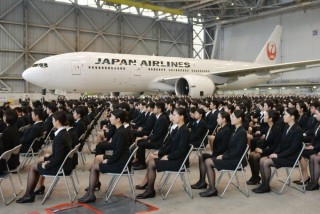Loading
Search
▼ Deficit Of Women Leaders Is A $750 Billion Problem For Japan
- Category:Other
As Japan’s economy mulls ways to boost a flagging economy, no policy lever holds more promise than empowering women.
In rabidly patriarchal Tokyo, no hint of progress is too small to celebrate as a touchstone moment for equality. This explains why the Twittersphere got so excited this week about Japan Airlines finally allowing female flight attendants to wear pants.
It explains, too, why observers are celebrating the election as a gender touchstone. Ahead of Sunday’s upper house contests, a record 28% of candidates were women. And 28 of those 104 women won parliament seats, roughly 27% of those up for grabs. A good result, but one that merely matches the 2016 election.
Here are two other metrics that augur less well for female advancement. One, the proportion of women in leadership remains well below the 30% goal Prime Minister Shinzo Abe set after he took office in 2012. Two, Abe, who pledged to make women “shine” in both government and business, still refuses to entrust women with top cabinet jobs.
Gender-equality boosters from Goldman Sachs strategist Kathy Matsui to “Lean In” author Sheryl Sandberg say Japan has a role model problem. Not a single Nikkei 225 Index company, for example, is run by a female Japanese CEO. And Abe’s “womenomics” talking points fall flat when you consider just one of his 19 cabinet members is a woman.
What’s more, Satsuki Katayama hasn’t been entrusted with a portfolio that, with all due respect, enjoys real power. The minister of state for gender affairs and regional revitalization doesn’t tend to get many headlines. To address Tokyo’s role model deficit, Abe could name a woman to run the finance ministry, foreign affairs or act as chief cabinet secretary.
In rabidly patriarchal Tokyo, no hint of progress is too small to celebrate as a touchstone moment for equality. This explains why the Twittersphere got so excited this week about Japan Airlines finally allowing female flight attendants to wear pants.
It explains, too, why observers are celebrating the election as a gender touchstone. Ahead of Sunday’s upper house contests, a record 28% of candidates were women. And 28 of those 104 women won parliament seats, roughly 27% of those up for grabs. A good result, but one that merely matches the 2016 election.
Here are two other metrics that augur less well for female advancement. One, the proportion of women in leadership remains well below the 30% goal Prime Minister Shinzo Abe set after he took office in 2012. Two, Abe, who pledged to make women “shine” in both government and business, still refuses to entrust women with top cabinet jobs.
Gender-equality boosters from Goldman Sachs strategist Kathy Matsui to “Lean In” author Sheryl Sandberg say Japan has a role model problem. Not a single Nikkei 225 Index company, for example, is run by a female Japanese CEO. And Abe’s “womenomics” talking points fall flat when you consider just one of his 19 cabinet members is a woman.
What’s more, Satsuki Katayama hasn’t been entrusted with a portfolio that, with all due respect, enjoys real power. The minister of state for gender affairs and regional revitalization doesn’t tend to get many headlines. To address Tokyo’s role model deficit, Abe could name a woman to run the finance ministry, foreign affairs or act as chief cabinet secretary.
- July 26, 2019
- Comment (0)
- Trackback(0)


